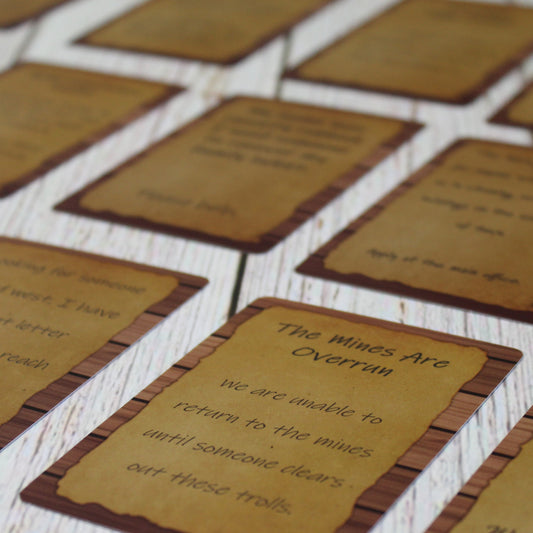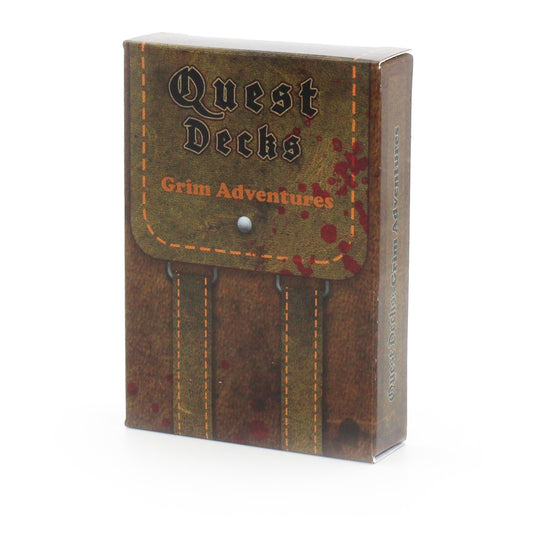As a long-time player who got started back in 3rd edition, I’ll admit I had mixed feelings about the changes to species (formerly “races”) in the D&D 2024 update. One of the biggest adjustments was that species no longer give bonuses to Strength, Dexterity, or other core stats. At first, it felt odd. The idea of an Elf not naturally having a Dexterity bonus and not fitting the Legolas-style archetype just didn’t sit right with me. How could an Elf not excel in what we’ve always imagined as their key traits?
But after giving it some thought - and especially after playtesting these new rules - I’ve come around. The 2024 changes really usher in a new era of character creation, one where you can play what you want to play, not just what’s “optimized” to be the best. We’re no longer going to see tables full of Goliath Barbarians or Half-Elf Bards just because those races gave the best stat bonuses for the role. Now, your character’s Background is what shapes their stats, and that opens up a world of possibilities. You can be the Halfling Barbarian or the Orc Wizard without feeling like you’re playing at a disadvantage.
And I have to say, I’m really happy with the switch from “races” to species. It’s cleaner - and the old term always had an uncomfortable connection to real-world racial issues.
Let’s dive into the key changes and how they’ll impact your next campaign.
What’s Changed for All D&D Species in the 2024 Rules?
1. Ability Scores Are Tied to Background, Not Species
In the 2024 update, species no longer give ability score bonuses. This is probably the most dramatic shift for longtime players. Instead, your character’s ability scores now come from their Background. For example, the Wayfarer background offers Dexterity, Wisdom, and Charisma as potential bonuses. You can choose how to apply them: +2 to one and +1 to another, or +1 to all three.
This change allows your character’s stats to reflect their life experiences—not just their biology. You can finally play the character concept you’ve always wanted without feeling forced into specific species-class combinations for the sake of optimization.
2. New Species in the 2024 PHB
The 2024 Player’s Handbook (PHB) introduces three new species:
- Aasimar
- Orc
- Goliath
While none of these are completely new to D&D, it’s the first time they’ve appeared as core species in the PHB. These additions give players more diversity in character choices right out of the gate. If you’ve always wanted to play a celestial Aasimar or a towering Goliath without reaching for supplemental materials—now’s your chance.
3. No More “Half” Species
The old “Half-Elf” and “Half-Orc” races have been retired.
4. Species Are More Powerful
In the 2024 rules, species have been given some impressive buffs compared to their 2014 counterparts. Take the Dragonborn, for example: their Breath Weapon now scales with level, starting at 1d10 damage and reaching up to 4d10. It can also be used as part of an Attack action, making it much more integrated into combat. Similarly, Drow Elves no longer suffer from Sunlight Sensitivity—and many species have gained innate spellcasting abilities. These changes make species more robust and dynamic in gameplay.
5. Innate Spellcasting
Several species now come with spells built into their abilities. For instance, Wood Elves get the Longstrider spell at Level 3 and Pass Without Trace at Level 5, while Chthonic Tieflings gain access to False Life at Level 3 and Ray of Enfeeblement at Level 5. This is a great way to tie magical abilities directly into the nature of your species—adding another layer of roleplaying and tactical depth.
Breaking Down the New Core Species
Here’s a quick look at some of the standout features of the new and revamped species in D&D 2024:
Aasimar
- Celestial Revelation: Transform into a celestial being with one of three forms (Radiant Soul, Radiant Consumption, or Necrotic Shroud)—gaining extra damage based on your proficiency bonus.
- Inner Radiance: Deals radiant damage within a 10-foot radius, enhancing your celestial presence in combat.
Dragonborn
- Breath Weapon: Now scales with level and can be used during an attack action. You also get to choose the shape—either a 15-foot cone or a 30-foot line—regardless of draconic ancestry.
- Draconic Flight: At Level 5, sprout wings for 10 minutes—gaining a flying speed once per long rest.
Goliath
- Giant Ancestry: Choose a type of giant (Cloud, Fire, Frost, Hill, Stone, or Storm) and gain unique benefits from your lineage.
- Large Form: At Level 5, you can become Large for 10 minutes—gaining advantage on Strength checks and increasing your speed by 10 feet.
Orc
- Adrenaline Rush: Dash as a bonus action and gain temporary hit points equal to your proficiency bonus. Plus, you recover uses on a short rest.
- Darkvision: Enhanced to 120 feet—doubling the range of previous editions.
How Backgrounds Shape Your Character
With ability scores now tied to Backgrounds—your character’s story has never mattered more. This gives players the freedom to create a backstory that truly influences gameplay. For instance—a Goliath Wizard with a scholarly background is now just as viable as the classic Goliath Barbarian. The result? More creative builds and a more diverse range of characters at the table.
Why “Species” Is Better Than “Race”
The shift from "race" to species isn’t just a terminology change—it’s a step toward a cleaner, more inclusive game. The old term has uncomfortable real-world connotations that don’t need to be part of the fantasy world we play in. By moving to "species"—we’re focusing on the nature and abilities of these fantastical beings without the baggage.
Final Thoughts
At first I wasn’t sure how I felt about these changes. Like many long-time players I was used to certain species coming with specific stat boosts, and I worried it would impact how we imagined characters. But after getting a feel for it I’m loving the flexibility it brings. Now you can focus on playing the character you want without worrying about whether their stats are “optimized.” You won’t see every Rogue be a Halfling or every Barbarian be a Goliath anymore - unless they truly want to play that character.
We’ve already started testing the new rules at our tables here at Dice Dungeons, and we’re excited to see how these changes play out in our campaigns. We’re loving the new creative freedom these species updates bring, and we can’t wait to see what characters our community comes up with.
Are you ready to jump into D&D 2024? When will your table make the switch? Let us know in the comments; we’d love to hear your thoughts and builds!
Need new gear for your D&D sessions? Check out Dice Dungeons for high-quality dice - accessories - and more to enhance your adventures!











